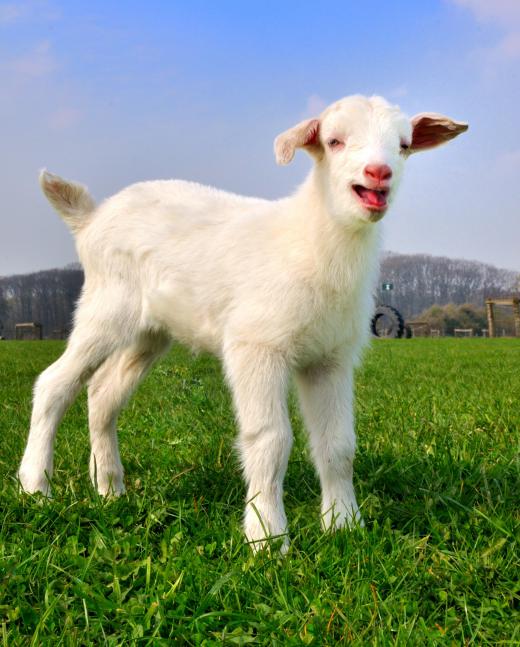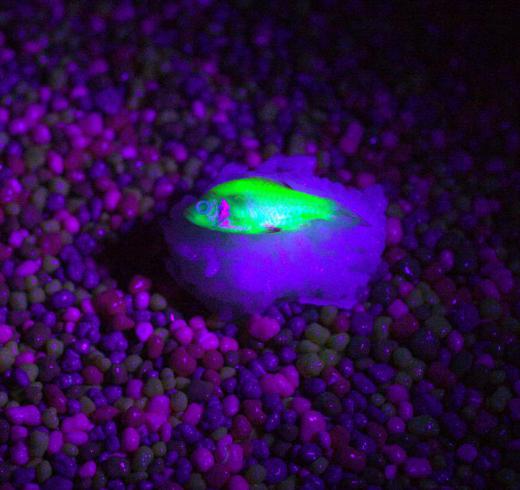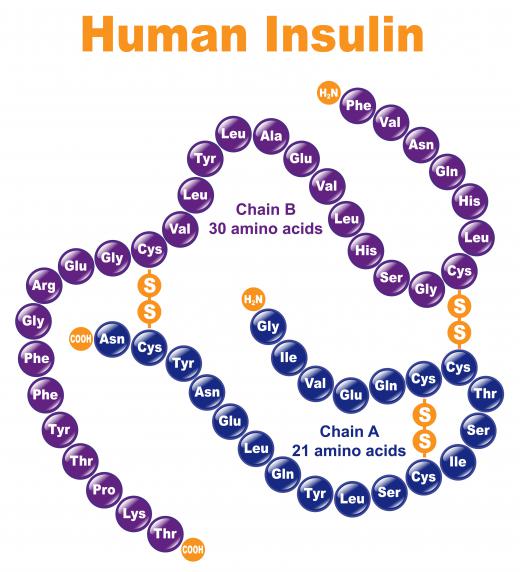What are Transgenic Animals?
Transgenic animals are genetically modified organisms (GMOs) which are animals. They have in some way had their genetic material changed, for any number of reasons. In some cases these animals may be designed simply to be visually interesting, to study, to yield more meat, or to perform a specific task better. They have had their DNA altered specifically by having the DNA of another animal inserted into their own code, in contrast to cisgenic animals, which have their DNA altered by other means.
The simplest type of transgenic animals are those which have genetic material inserted into their own code for research purposes. One notable example of this is the injection of material from a certain species of jellyfish into other creatures. This material is responsible for a fluorescent protein, GFP, which then allows researchers to track proteins tagged with GFP in the animal it has been inserted into.

There are valuable uses of transgenic animals in medicine, as well, with many animals altered in order to make them produce something needed by human beings. One of the first uses of transgenesis, for example, was to make the E. Coli bacteria produce human insulin, which could then be gathered cheaply, rather than having to be harvested from more expensive animals like pigs. A more contemporary example can be seen in the use of transgenic goats to product an anticoagulant in their milk. The milk can then be harvested from the animals, and the anticoagulant, ATryn, can be extracted and used in situations such as surgeries where the blood cannot be allowed to clot.

In research, transgenic animals may also allow for specific research possibilities. Modified mice, for example, are often used in laboratory testing. They can be modified so that researchers can observe specific responses their tissue has to diseases. This can lead to the development of drugs and treatments for humans suffering from those same diseases.

For the most part, transgenic animals have not become widely commercially available. This is in part because the public is still wary about eating them, and there is some concern over what would happen if certain super-species were to escape into the wild and overrun native populations. Many fish farms, for example, have developed transgenic versions of popular food fish, which can grow many times the size of their un-modified counterparts. Eventually this may allow for a much cheaper rearing of food fish, driving down the price on these fish for consumers.
One of the most iconic transgenic animals is the brand GloFish®. These are zebrafish that have been modified to include genes that make them glow fluorescent colors. The fish were created in 1999 with the goal of helping to detect pollutants, but it quickly became apparent that they had huge potential as a novelty item. They come in three colors, with green GloFish® derived from the GFP protein from jellyfish, a red GloFish® derived from a type of sea coral, and a yellow GloFish® derived from a variant of the jellyfish protein.
AS FEATURED ON:
AS FEATURED ON:













Discussion Comments
Each thing has two sides. Whether it's good or not, it depends on how we look at it. Any overuse would cause bad effect.
I do think the application of transgenic animals should be used for strict aims and try to use fewer such methods as animals are also living creatures. The very first use of transgenic animal mentioned in the post scared me a lot. We can't just for do it for being visually interesting. And with the present technology, many chemicals that are hard to get naturally can be gained by synthesis.
“Transgenic animals” is usually a kind of a mouse which accepts the foreign genes into its body to form a part of its genome. The introduced gene is first isolated and designed to carry appropriate segments.
does anyone know what the disadvantages of transgenic animals for medical research are?
I need a little bit of help on an assignment. Would the creation of transgenic animals be a situation in which homologous recombination would be used, or am I just way off the mark?
Biology's not really my strong suit, so I need all the help I can get!
@rallenwriter: I understand what you're saying, but think about all the advances that transgenics have brought to the world.
Even if you're not thinking in terms of medical advances, the simple understanding that this gives us of physical processes is amazing, not to mention the potential economic benefits.
I'm not for cruelty to animals, but I think that the benefits of trangenics far outweigh the downside.
I'm still not sure how I feel about genetically modified animals. I mean, I can understand their usefulness, and how important it is for science, etc, but I really feel like cloning animals and messing with their genetics is just kind of playing with fire.
I mean, sure, it's helpful, and it could drive down the cost of certain foods, etc, but how much do scientists really know about the long term effects of being around these animals, much less eating them?
And besides, I think that sometimes it can be cruel to the animals. Think about transgenic mice. They are often genetically engineered for experiments, sometimes with devastating physical results to the mouse.
For instance, one famous example of mice with transgenic modification is the "knockout mouse". These are normal mice that have had one of their genes turned off through an intentional mutation to try and see what that gene does.
They use this for all kinds of medical research, but think about what that must do to the mice. If an off chromosome can mess up a human so badly, I can't imagine that it would be good for a mouse.
Again, I'm not all against using a transgenic mouse, or any mouse for experiments. I just think that there are a lot of ethical concerns with the procedures, and wonder if there might be a feasible alternative.
Post your comments